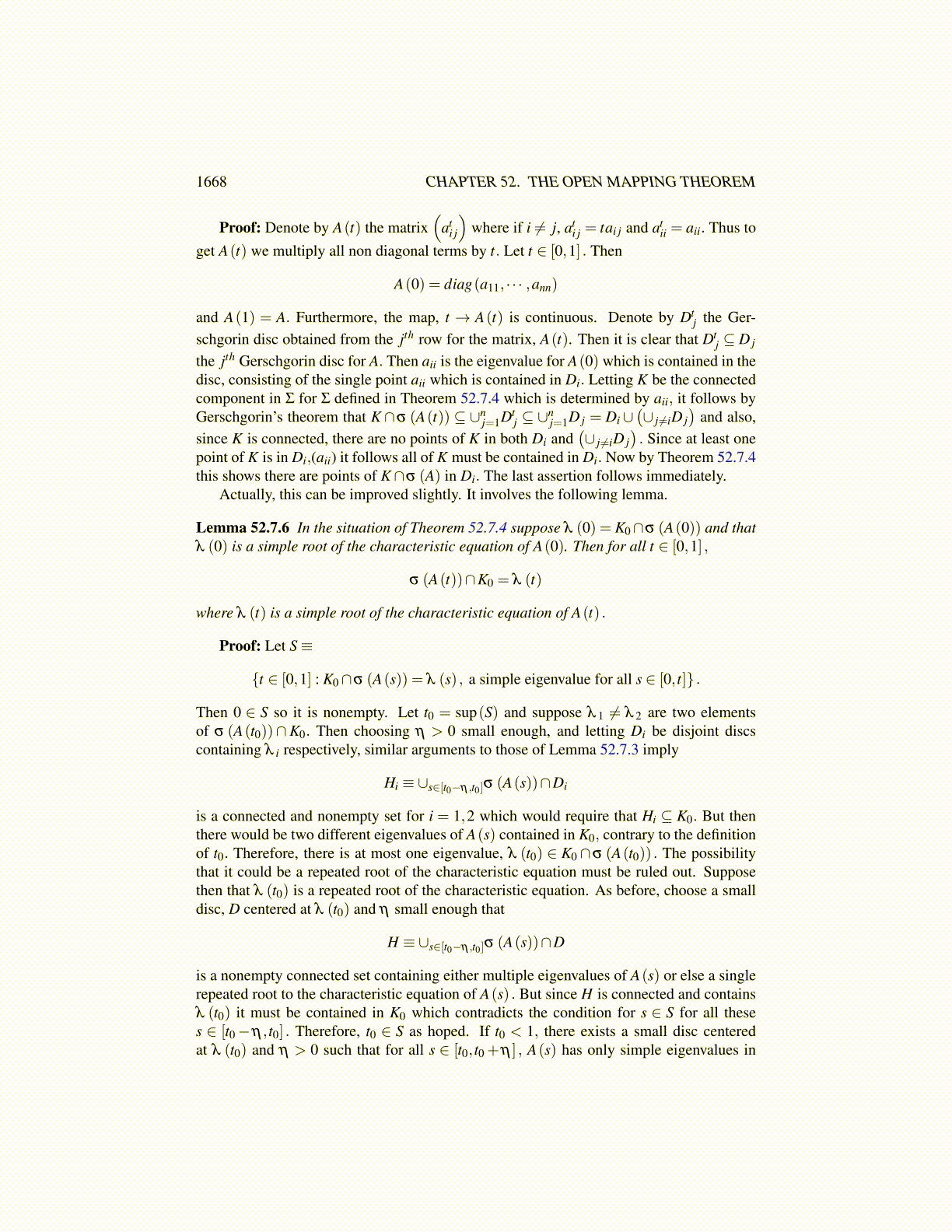
1668 CHAPTER 52. THE OPEN MAPPING THEOREM
More can be said using the theory about counting zeros. To begin with the distancebetween two n×n matrices, A = (ai j) and B = (bi j) as follows.
||A−B||2 ≡∑i j
∣∣ai j−bi j∣∣2 .
Thus two matrices are close if and only if their corresponding entries are close.Let A be an n× n matrix. Recall the eigenvalues of A are given by the zeros of the
polynomial, pA (z) = det(zI−A) where I is the n× n identity. Then small changes in Awill produce small changes in pA (z) and p′A (z) . Let γk denote a very small closed circlewhich winds around zk, one of the eigenvalues of A, in the counter clockwise direction sothat n(γk,zk) = 1. This circle is to enclose only zk and is to have no other eigenvalue on it.Then apply Theorem 52.6.1. According to this theorem
12πi
∫γ
p′A (z)pA (z)
dz
is always an integer equal to the multiplicity of zk as a root of pA (t) . Therefore, smallchanges in A result in no change to the above contour integral because it must be an integerand small changes in A result in small changes in the integral. Therefore whenever everyentry of the matrix B is close enough to the corresponding entry of the matrix A, the twomatrices have the same number of zeros inside γk under the usual convention that zeros areto be counted according to multiplicity. By making the radius of the small circle equal toε where ε is less than the minimum distance between any two distinct eigenvalues of A,this shows that if B is close enough to A, every eigenvalue of B is closer than ε to someeigenvalue of A. The next theorem is about continuous dependence of eigenvalues.
Theorem 52.7.2 If λ is an eigenvalue of A, then if ||B−A|| is small enough, some eigen-value of B will be within ε of λ .
Consider the situation that A(t) is an n× n matrix and that t → A(t) is continuous fort ∈ [0,1] .
Lemma 52.7.3 Let λ (t) ∈ σ (A(t)) for t < 1 and let Σt = ∪s≥tσ (A(s)) . Also let Kt be theconnected component of λ (t) in Σt . Then there exists η > 0 such that Kt ∩σ (A(s)) ̸= /0 forall s ∈ [t, t +η ] .
Proof: Denote by D(λ (t) ,δ ) the disc centered at λ (t) having radius δ > 0, with otheroccurrences of this notation being defined similarly. Thus
D(λ (t) ,δ )≡ {z ∈ C : |λ (t)− z| ≤ δ} .
Suppose δ > 0 is small enough that λ (t) is the only element of σ (A(t)) contained inD(λ (t) ,δ ) and that pA(t) has no zeroes on the boundary of this disc. Then by continu-ity, and the above discussion and theorem, there exists η > 0, t + η < 1, such that fors ∈ [t, t +η ] , pA(s) also has no zeroes on the boundary of this disc and that A(s) has the